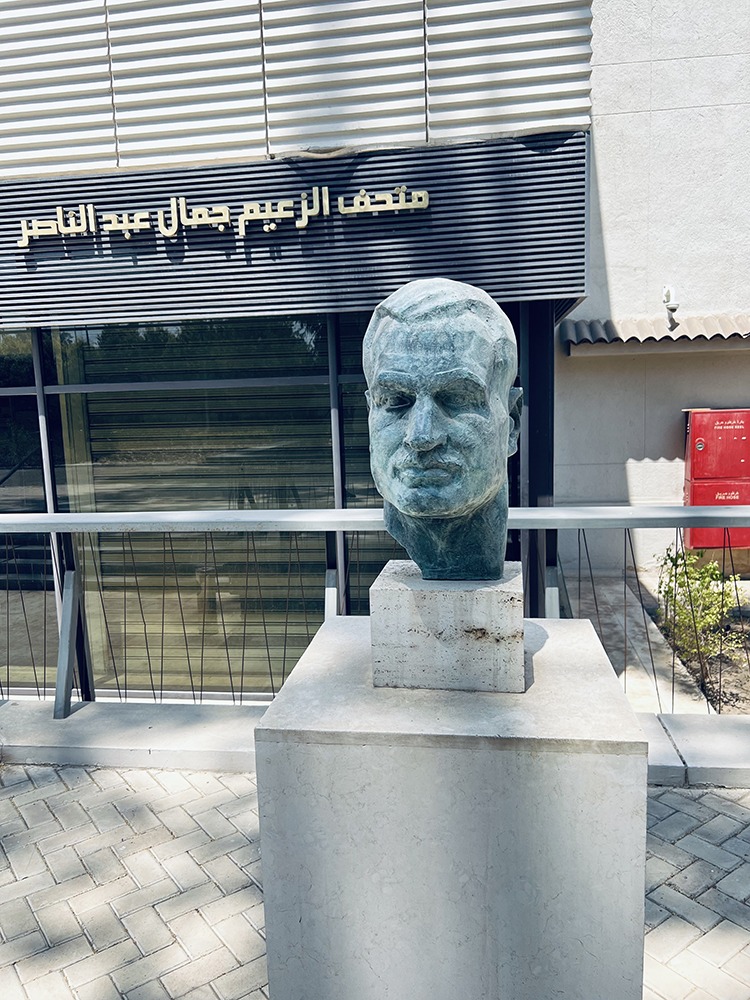Gamal Abdel Nasser, who is regarded as one of the most significant political personalities in contemporary Arab history and politics, served as Egypt’s second president from 1956 till his death in 1970. He led the Egyptian Revolution of 1952, which toppled the monarchies of Egypt and ushered in a new era of change in the country, alongside Muhammad Naguib, the country’s first president. His policies, including a short-lived union with Syria, change advanced pan-Arab nationalism and introduced Nasserism to Egypt an ideology which has heavy socialist influence.
To commemorate his memory, Dr. Enas Abdel Dayem, Minister of Culture, opened the museum of the late leader Gamal Abdel Nasser on 23 July 2019 to the public. She emphasized that the July Revolution shaped contemporary Egypt and achieved numerous successes in the political, social, and cultural spheres, inviting a predominantly youthful audience to the opening according to state information page.

The late president’s museum is located on a 13,400 square meter plot of land in the Manshiet Bakri neighborhood of Heliopolis, Cairo. It has its own garden and two levels. The president’s offices, his salons, the master bedroom, the living room, two living rooms, and his collectibles are all located on the ground and first floors. The Abdel Nasser Museum also houses a variety of his personal papers, possessions, family photos, outfits, cameras, and a collection of pens, medals, and souvenirs.
Abdel Nasser had five children including Khalid, Abdel Hamid, Abdel Hakim, Hoda, and Mona. So as you walk down the museum, there are portraits of Abdel Nasser and his children. Abdel Hamid, Abdel Hakim, and Khalid (the oldest) are present in the below photograph.

Abdel Nasser was an avid writer who used the typewriter seen below to write up hisspeeches and messages for international leaders. In addition, there are numerous collections of Abdel Nasser’s favorite novels in his office, living room, own bedroom, and even guest rooms.

Abdel Nasser, according to the museum tour guide, enjoyed playing chess with his children and occasionally with visitors he hosted at home during delegations and other events.

The museum plays short documentary films about the journey of Abdel Nasser, highlighting key events such as the nationalization of Suez Canal in 1956, Abdel Nasser’s assassination attempt in 1954, to the revolution of 23 July and the Egyptian-Syrian joint defence agreement in 1955.
The highlight of the museum tour was the explanation as to how he led 89 other free officers in an army coup that deposed the regime of King Farouk. A new government was then formed by the Nasser-led Revolutionary Command Council, of which Major General Muhammad Naguib was the figurehead leader. In 1954, Nasser emerged from behind the scenes, removed Naguib from power, and proclaimed himself prime minister of Egypt.

The tour concludes with Abdel Nasser’s Austin A40 standing at the rear gate leading to the backyard.

Abdel Nasser was a key figure in world history as he took on several projects such as the building of the Aswan High Dam, built with the help of the Soviet Union, which began operating in 1968; 20th-century life was introduced into many villages; industrialization was accelerated; land reforms broke up Egypt’s large private estates. The museum is rich in history and pieces together events which led to the Egypt we know today.



